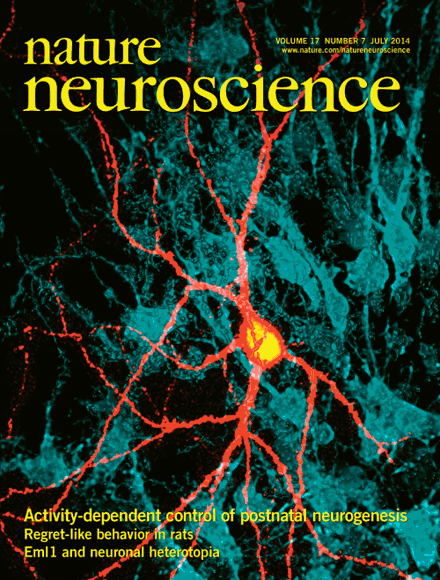 GETTY
GETTYThe ancient Mayan observatory El Caracol in Yucatán is a testament to the long scientific tradition in this region.
Mexico debe hacer más
Nature Materials 9 , 779 (2010) doi:10.1038/nmat2876. Published online 23 September 2010
Mexico es un país rico, con recursos naturales y buena educación. Sin embargo su Cienca permanece por debajo de su potencial. En este enfoque se trata de alumbrar algunos de los problemas estructurales de este país.
Hace 200 años este Septiembre, México ganó independencia política. Con una población de más de 100 millones, México en el más grande país de habla hispana en el mundo y el segundo más poblado de Latino America después de Brasil (1). México goza de abundancia de recursos naturales, todos importantes para su economía, el petróleo el más (2). Todos estos factores hacen al país una de las claves de la economía Latino Americana, bien soportada por su pertenencia al Tratado de Libre Comercio con los Estados Unidos de Norteamérica y Canadá. Al mismo tiempo la inversión de México en 2008, en investigación científica y desarrollo tecnológico fue de solo 0.37% de su Producto Interno Bruto (PIB), el más bajo entre los países que pertenecen a la Organización para la Cooperación Económica y Desarrollo (3).
No hay duda de que México ha mejorado su acceso a la educación en las últimas décadas. En un reporte de 2007, del Banco Mundial (4) se muestra que el 97% de los infantes del país tienen nivel de educación primaria, y este es un buen indicador. Sin embargo, cuando se examina la educación superior, esta cae hasta el 26.3% de los jóvenes del país.
No obstante el éxito en la educación primaria, el desarrollo científico y tecnológico de México está muy detrás de su potencial. En un comentario editorial de Nature Materials en la página 781 (5), Arturo Menchaca Rocha, Presidente de la Académia Mexicana de Ciencias, hace notar que solo 0.7% de las publicaciones indexadas por el ISI Web of Knowledge son de México, no obstante de que el país constituye el 1.6% de la población mundial.

El incremento de la inversión en investigación, no será la panacea ni evitará las ineficiencias del sistema, dentro de las cuales se encuentra la asimetría entre las instituciones del país. Por ejemplo la UNAM en 2009 tuvo un presupuesto federal impresionante de mil seiscientos millones de dólares (7), el cual es el más grande de todas las universidades del país (8). Desde luego la UNAM es una institución enorme con más de 300,000 estudiantes. Sin embargo, otras universidades no tienen acceso a recursos semejantes, aún cuando, estas instituciones hacen importantes contribuciones a la investigación. Parece entonces inevitable, incrementar los recurso para Investigación y Desarrollo en el país.
.jpg)
Al mismo tiempo, los logros individuales de científicos mexicanos se están incrementando visiblemente. La reciente creación de Redalyc (9), una revista de acceso abierto para Latino America ha mejorado el impacto de la investigación local de nivel global, de acuedo a la UNESCO, como una importante contribución al conocimiento científico (10).
Un importante asunto, resaltado por Menchaca Rocha y de la Fuente Ramírez es la transferencia tecnológica en la industria mexicana, que necesita avanzar su capacidad innovativa y expandir su capacidad para la innovación. Con menos de dos investigadores por cada mil trabajadores en la industria (11) y los sectores de negocios, el sector juega un papel mucho más pequeño en el proceso de innovación que el sector educativo. Como consecuencia, México tiene una enorme dependencia de la tecnología extranjera, con un muy bajo índice de patentes registradas en el país. Durante los 1990s el principal objetivo de la ciencia y la tecnología en México se concentró en el incrementeo de la capacidad tecnológica del país, y el desarrollo tecnológico estuvo a la saga, es decir no se ha avanzado.
A 200 años de la indepencia política de México, la nación ha visto la creación de sus instituciones de educación superior. Pero para las siguientes décadas se tendrá que construir y crear logros para una vigorosa ciencia y tecnología base, para el beneficio y prosperidad de las personas que vivimos en este país.
This Editorial, as well as the other editorial content of this focus issue, has been prepared in cooperation with Jesús Rogel-Salazar, a lecturer at the School of Physics, Astronomy and Mathematics at the University of Hertfordshire, UK.
References
1. http://www.un.org/esa/population/
2. http://0-go.nature.com.fama.us.es/k7mtFD
3. http://0-go.nature.com.fama.us.es/t9GAai
5. Commentary. Nature Mater. 9, 781–783 (2010) Article
6. Interview. Nature Mater. 9, 784–785 (2010). Article
7. http://0-go.nature.com.fama.us.es/zE8d2N
8. http://0-go.nature.com.fama.us.es/uSQLZz
Mexico must do more
Nature Materials 9 , 779 (2010) doi:10.1038/nmat2876 Published online 23 September 2010
Two hundred years ago this September, Mexico gained political independence. With a population of about 100 million, Mexico is the largest Spanish-speaking country in the world and the second most-populous country in Latin America after Brazil (1). Mexico boasts an abundance of natural resources, all of which are important to its economy, with oil being the main one (2). All these factors make the country one of Latin America's key economies, well-supported by its membership in NAFTA, the North American Free Trade Agreement between the US, Canada and Mexico. At the same time, Mexico's 2008 investment in research and technological development (R&D) is only 0.37% of its gross domestic product (GDP), the lowest amongst 40 developed nations tracked by the Organization for Economic Cooperation and Development (3).
There is no doubt that Mexico has improved access to education and literacy over the past few decades. A 2007 World Bank report (4) that shows 97% enrolment at the primary level is a good indicator that more children are completing primary education. However, at higher education levels the situation is very different with only 26.3% gross enrolment for the tertiary level.
Despite such encouraging statistics in primary education, Mexico's scientific and technological output clearly lags behind its potential. In his Commentary on page 781 of this issue (5), Arturo Menchaca Rocha, President of the Mexican Academy of Sciences, notes that only 0.7% of publications indexed by ISI Web of Knowledge are from Mexico, despite the country's 1.6% share of global population.
A key concern is of course the severe underfunding of science and technology in relation to the country's GDP. Brazil spends three times more on its research infrastructure — with considerable success — and Japan's R&D spending as a fraction of GDP is almost ten times higher. It is for this reason that Juan Ramón de la Fuente Ramírez, President of the International Association of Universities, a former Mexican Minister of Health and former Rector of the Universidad Nacional Autónoma de México (UNAM) in his interview with Nature Materials asks for a national long-term strategy that ensures continuity and progress in Mexican science (6).
Increasing research funding is of course no panacea. Even at the present level of funding inefficiencies exist, and there are significant asymmetries between institutions or even states in Mexico. UNAM's 2009 federal government funding stood at an impressive 1.6 billion US dollars (7), which is larger than the budget of some states in Mexico (8). Of course, UNAM is an enormous institution with more than 300,000 registered students. However, other publicly funded universities around the country do not have access to similar resources even though these institutions make important contributions to the research output of the country. In a situation where increased R&D funding seems inevitable, increases in budget could be used to even imbalances in funding as an efficient way of enhancing the country's research output.
Similarly, a dedicated funding of centres of excellence could attract Mexican researchers from abroad to return to their country. Mexico's National Science and Technology Council (CONACYT), for example, funds 27 research centres with a budget of about US$450 million. Germany's Max-Planck Society in 2007 ran 80 institutes and research centres on a total budget of 1.433 billion Euros. Even though Max-Planck Institutes tend to be smaller than CONACYT centres, at present exchange rates their funding per institute on average is almost 40% higher.
At the same time, the individual achievements of Mexican scientists are increasingly visible. The recent creation of Redalyc (9), an open access journal repository for Latin America has improved the impact that local research has at a global level, and according to UNESCO is an important contribution to improving access to scientific knowledge (10).
An important issue raised by both Menchaca Rocha and de la Fuente Ramírez is technology transfer. Mexico's industry needs to advance its innovative capacity and expand its capability for innovation. Fewer than two researchers per thousand work in industry11 and the business sector plays a much smaller role in the innovation process than the higher education sector. As a consequence, Mexico has an enormous dependence on foreign technology, and a very low rate of patents registered to Mexican nationals. During the 1990s the main objective in science and technology in Mexico was heavily concentrated on increasing the scientific research capacity of the country, and technological development was somewhat set aside.
Two hundred years ago Mexico achieved political independence. During the past century, the country has seen the creation of its higher-education institutions. For its next few decades, it is now time for Mexico to build on these achievements and to create a strong science and technology base for the benefit and prosperity of its people.
This Editorial, as well as the other editorial content of this focus issue, has been prepared in cooperation with Jesús Rogel-Salazar, a lecturer at the School of Physics, Astronomy and Mathematics at the University of Hertfordshire, UK.
References
1. http://www.un.org/esa/population/
2. http://go.nature.com/k7mtFD
3. http://go.nature.com/t9GAai
4. http://data.worldbank.org/
5. Commentary. Nature Mater. 9, 781–783 (2010)
6. Interview. Nature Mater. 9, 784–785 (2010).
7. http://go.nature.com/zE8d2N
8. http://go.nature.com/uSQLZz
9. http://www.redalyc.org
10. http://go.nature.com/quYOlH















































































